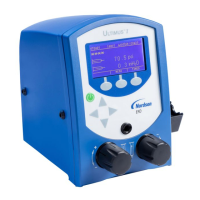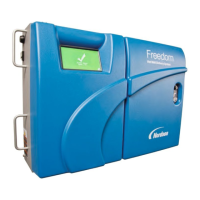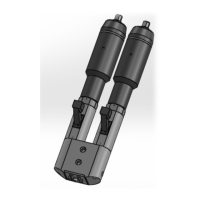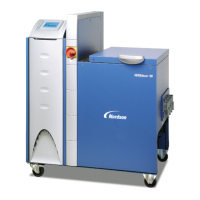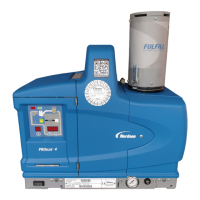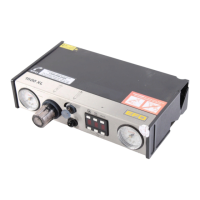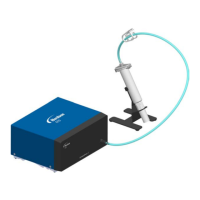8-6 Parts Replacement
To install a conveyor belt:
WARNING! This procedure should only be performed by a trained service technician.
1. Using isopropyl alcohol and a soft cloth or cotton swabs, clean all metal surfaces that make
contact with the belt, including pulleys and rails.
2. Compare the new belt to the one remaining on the other rail to determine its proper
orientation.
3. Loop the belt around the pulley tire at one end of the conveyor rail and extend it toward the
other end. See Figure 8-2.
4. Loop the conveyor belt around the two pulley tires on the tensioner.
5. Continue to extend the belt and loop it onto the pulley tire at the far end of the conveyor
rail. If you cannot get the belt onto the pulley tire, proceed as follows:
a. Loosen the 4 mm screw attaching the tension pulley tire to the conveyor rail bracket.
b. Slide the tension pulley tire to the right to reduce tension and provide slack in the belt.
c. Hold the tension pulley tire and belt securely in place while tightening the screw with a
4 mm hex key. Torque the screw to 87 in-lbs (1.0 kg-m).
6. Reinstall any removed stop pins to their former positions.
7. When both conveyor belts have been replaced, power on the dispensing system.
8. In the Fluidmove Jog Commands dialog box, click on both the slow
and the fast
X-axis jog buttons to move the conveyor belts in both directions.
The conveyor belts should move smoothly in both directions with no slipping on their
pulleys.
9. If necessary, tension the conveyor belts as described in 6.13 Tensioning the Conveyor Belts.
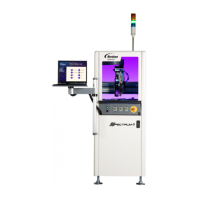
